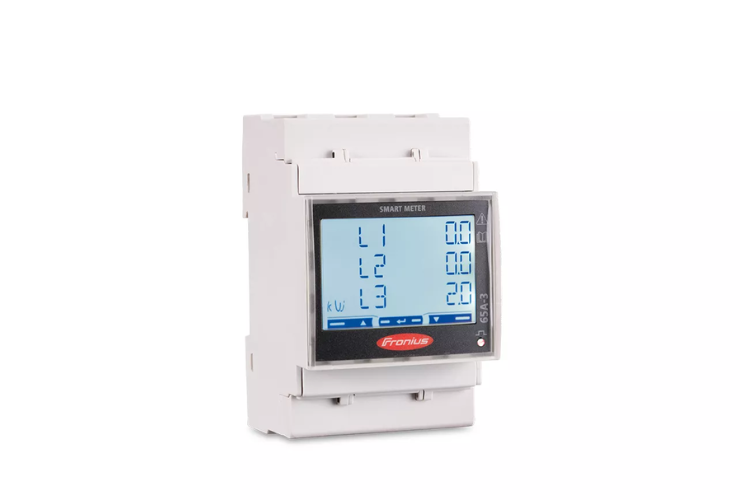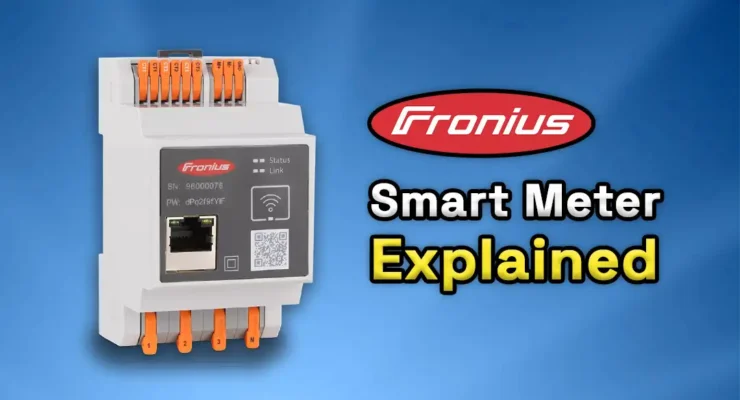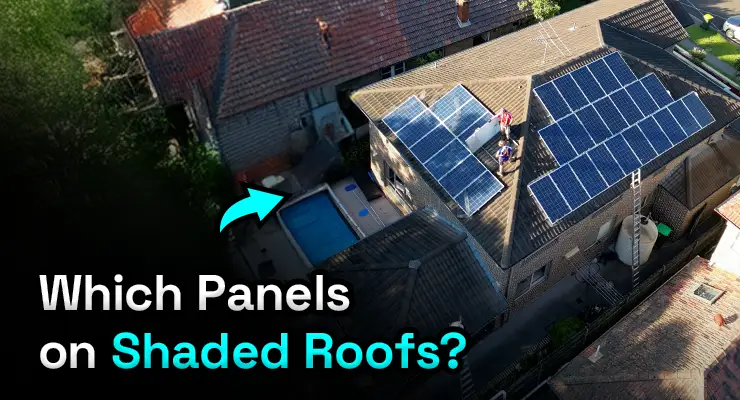Fast read
The Fronius Smart Meter is an essential device for optimising solar power systems. Installed in your switchboard, it measures electricity drawn from the grid and surplus solar power sent back. Connecting with your solar inverter, it offers a complete view of your solar system’s performance via online monitoring.
This helps maximise solar self-consumption and reduce power bills. The Fronius Smart Meter also limits solar exports to comply with local regulations. It integrates with Fronius Solar.web for easy monitoring and comes with a 2-year warranty. While optional, its benefits make it a valuable addition to any solar setup.
What is the Fronius Smart Meter?
The Fronius Smart Meter is an advanced piece of hardware designed to optimise the performance and monitoring of solar power systems. This smart device in your switchboard measures the electricity used from the grid and any extra solar power sent back. By connecting with the solar inverter via a data cable. The Fronius Smart Meter provides a comprehensive view of your solar PV system’s performance through online monitoring software.
The Importance of the Fronius Smart Meter
Without a smart meter, online monitoring software can only display the amount of solar power generated by your system. This limited data does not provide insights into how much of that energy is consumed directly within your property versus how much is exported back to the grid. The Fronius Smart Meter helps homeowners see how much energy they use and produce. This can help them use more of their own solar power and lower their electricity bills.
Key Features and Capabilities
One of the standout features of the Fronius Smart Meter is its solar export-limiting capabilities. In many states of Australia, there is a limit of 5kVA of solar export on single-phase residential connections.
The smart electricity meter communicates with the solar inverter. It reduces the system’s output if it exceeds the limit. This ensures that the system complies with the rules.
Bi-Directional Meter vs. Smart Meter
It’s important to distinguish between a bi-directional meter and a smart meter. Your local Distributed Network Service Provider (DNSP) supplies a bi-directional meter, mandated for all solar power solutions in Australia. This revenue-grade meter measures the power drawn from the grid and the electricity exported back into it.
It measures the power drawn from the grid and the electricity exported back into it.
The bi-directional meter is required for solar installations. The Fronius Smart Meter is an optional upgrade. It significantly enhances monitoring of your solar energy system’s performance and household energy usage.
Your solar installation company typically assists with the application to have your meter changed over if necessary. Although this process often incurs a small fee.

Specifications of the Fronius Smart Meter
The Fronius Smart Meter 63A-1 is commonly used in single-phase residential installations. It is compact, measuring 89mm tall by 35mm wide, and features a 6-digit LCD screen. For three-phase installations, a larger and more expensive model is available, but it serves the same purpose.
The smart meter integrates seamlessly with Fronius Solar.web, an online portal that provides an easy-to-use interface for monitoring your solar system’s performance. However, understanding the terminology and graphs on this portal can be challenging at first. So it’s advisable to consult a guide or ask your installer for a thorough explanation post-installation.
Warranty and Longevity
Fronius Smart Meters have a 2-year warranty. Fronius inverters come with a 5-year parts and service warranty. They also have a 10-year parts-only warranty.
Cost of the Fronius Smart Meter
The cost of a Fronius Smart Meter varies based on location and the hardware supplier. Installation costs may vary based on the need for extra work to accommodate the hardware in the switchboard. Usually, if there is room, a solar installer can install in just 30 minutes to an hour.
Here’s an indicative pricing breakdown:
Electrical ConnectionHardware CostInstallation CostTotal CostSingle Phase$250 – $300$100 – $300$350 – $600Three Phase$500 – $550$150 – $400$650 – $950
Is the Fronius Smart Meter Necessary?
Whether or not you need a Fronius Smart Meter depends on your local DNSP’s requirements for solar exports. If there is no need to limit solar exports, the smart meter is optional.
Installing a smart meter for solar power is a good investment. It usually only increases the total cost by less than 10%. It enhances your understanding of the system and improves the utilisation of the energy it generates.
Integration and Alternatives
To ensure proper functionality, your smart meter should be of the same brand as your inverter. You can also use a third-party monitoring software device to install monitoring software like Solar Analytics.
Conclusion
The Smart Meter is a great tool for solar power systems, providing detailed information on energy use and production. This advanced technology helps homeowners increase their solar energy consumption and significantly reduce power bills. By monitoring the energy produced and consumed, it plays a crucial role in optimising the efficiency and performance of solar installations.
Smart Meters provide real-time data, enabling you to make informed decisions about your energy usage. Whether you’re at home or away, you can access this information via a user-friendly app or online portal. You can use more solar energy when it’s sunny by changing your habits. This will reduce your reliance on the grid and save you money on electricity.
Moreover, Smart Meters are essential for complying with local regulations that require detailed electricity usage reporting. They provide accurate data that ensures you meet all necessary standards, avoiding potential fines or penalties. This feature is particularly beneficial for new installations where compliance is critical.
In addition to regulatory compliance, a Smart Meter gives you a comprehensive understanding of your solar system’s performance. It tracks how much energy your panels generate, how much you consume, and how much surplus energy is sent back to the grid. This insight helps in identifying patterns and areas where you can improve efficiency.

